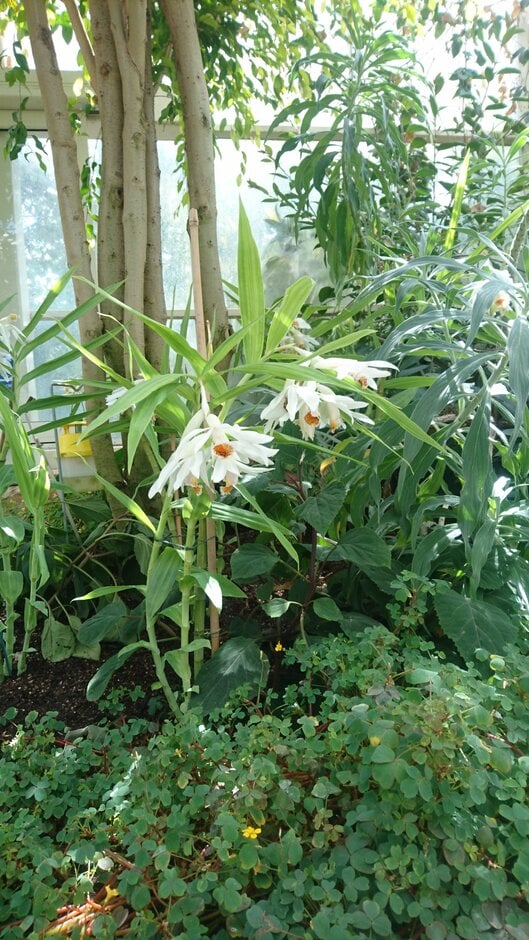Thunia alba
white Thunia
A large, deciduous, terrestrial orchid with up to 60cm long canes, wrapped in thin, alternate, papery sheaths and green, sometimes blue-tinted, 20cm long and 4cm wide, lance-shaped leaves. Up to ten white, fragrant flowers are produced in a terminal cluster at the tip of mature canes in summer. The lip is golden-yellow with frilled edge. This orchid is leafless in winter, with the new growth emerging in spring from the buds at the base of last year's canes

Size
Ultimate height
0.5–1 metresTime to ultimate height
5–10 yearsUltimate spread
0.1–0.5 metresGrowing conditions
Moisture
Moist but well–drained, Well–drainedpH
NeutralColour & scent
| Stem | Flower | Foliage | Fruit | |
| Spring | Green | |||
|---|---|---|---|---|
| Summer | White Yellow | Green | ||
| Autumn | Green Yellow | |||
| Winter |
Position
- Partial shade
Aspect
East–facing or South–facing or West–facing
Exposure
Sheltered Hardiness
H1ABotanical details
- Family
- Orchidaceae
- Native to GB / Ireland
- No
- Foliage
- Deciduous
- Habit
- Clump forming, Columnar upright, Trailing
- Name status
Correct
- Plant range
- Asia
How to grow
Cultivation
Grow in an open, free-draining, bark-based orchid mix. Provide enough bright filtered light, but keep away from direct sunlight or a heating source. Ideal temperatures are around 13 °C minimum at night and up to maximum 24 °C during the day. Requires dry, winter rest when leafless. In spring and summer, water with soft water (ideally rainwater) when the pot feels light when lifted. Ensure that all water drains away, preventing the plant from sitting wet. Orchid fertiliser can be applied throughout the growing season. See indoor orchid cultivation for more tips.
Propagation
Propagation by seed is only possible in a controlled laboratory environment. Well-estastiblished plants can be propagated by division. Ensure each division has young enough, mature pseudobulbs to support new growth.
Suggested planting locations and garden types
- Houseplants
- Conservatory and greenhouse
Pruning
No pruning required other than removing spent flower stems.
Pests
May be susceptible to glasshouse red spider mite. Thrips can cause damage on flowers and developing flower buds
Diseases
Generally disease-free. Poor air movement may cause bacterial or fungal rots. Good hygiene practice and sterilising cutting tools prevent the spread of virus diseases
Get involved
The Royal Horticultural Society is the UK’s leading gardening charity. We aim to enrich everyone’s life through plants, and make the UK a greener and more beautiful place.